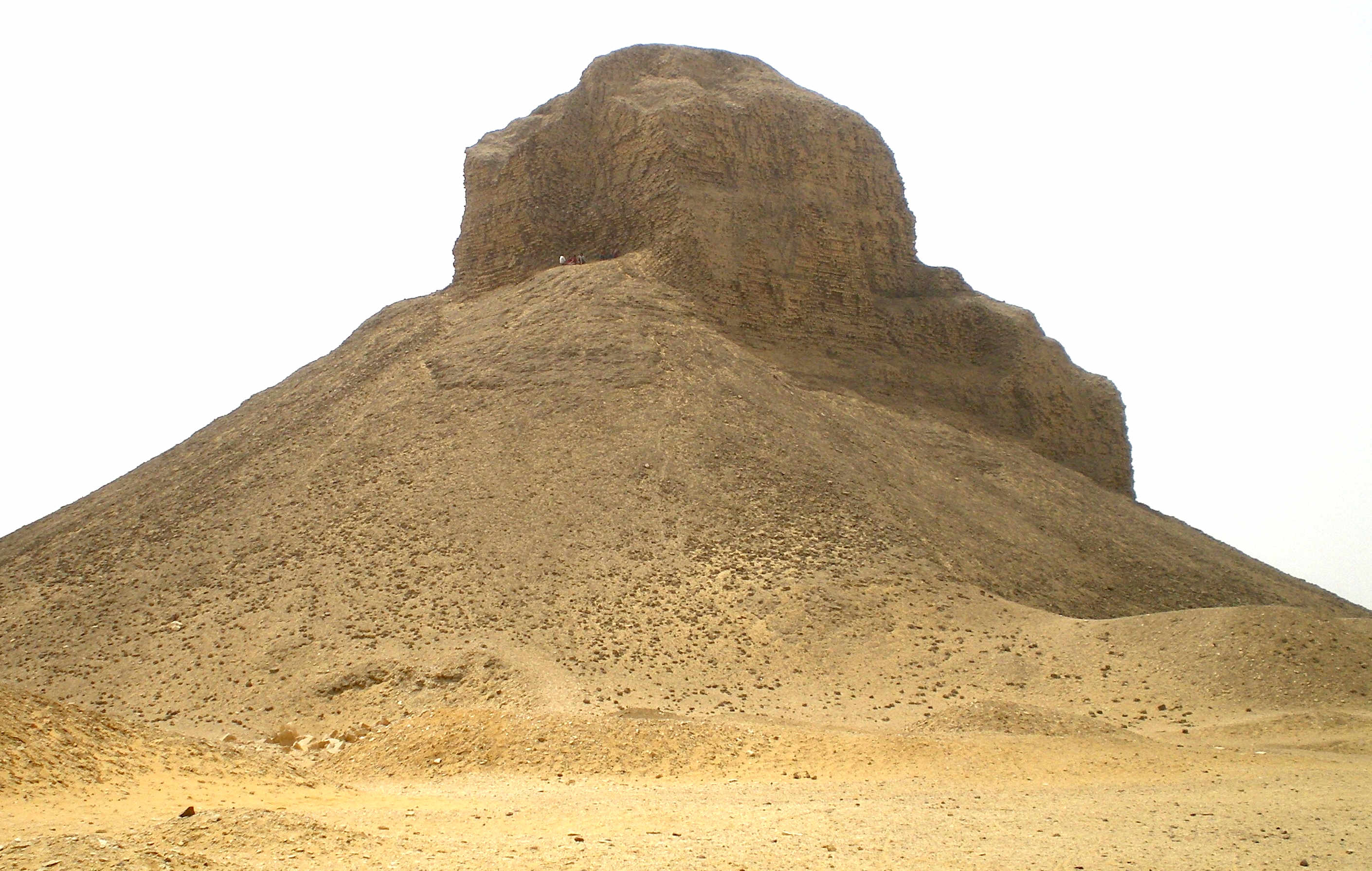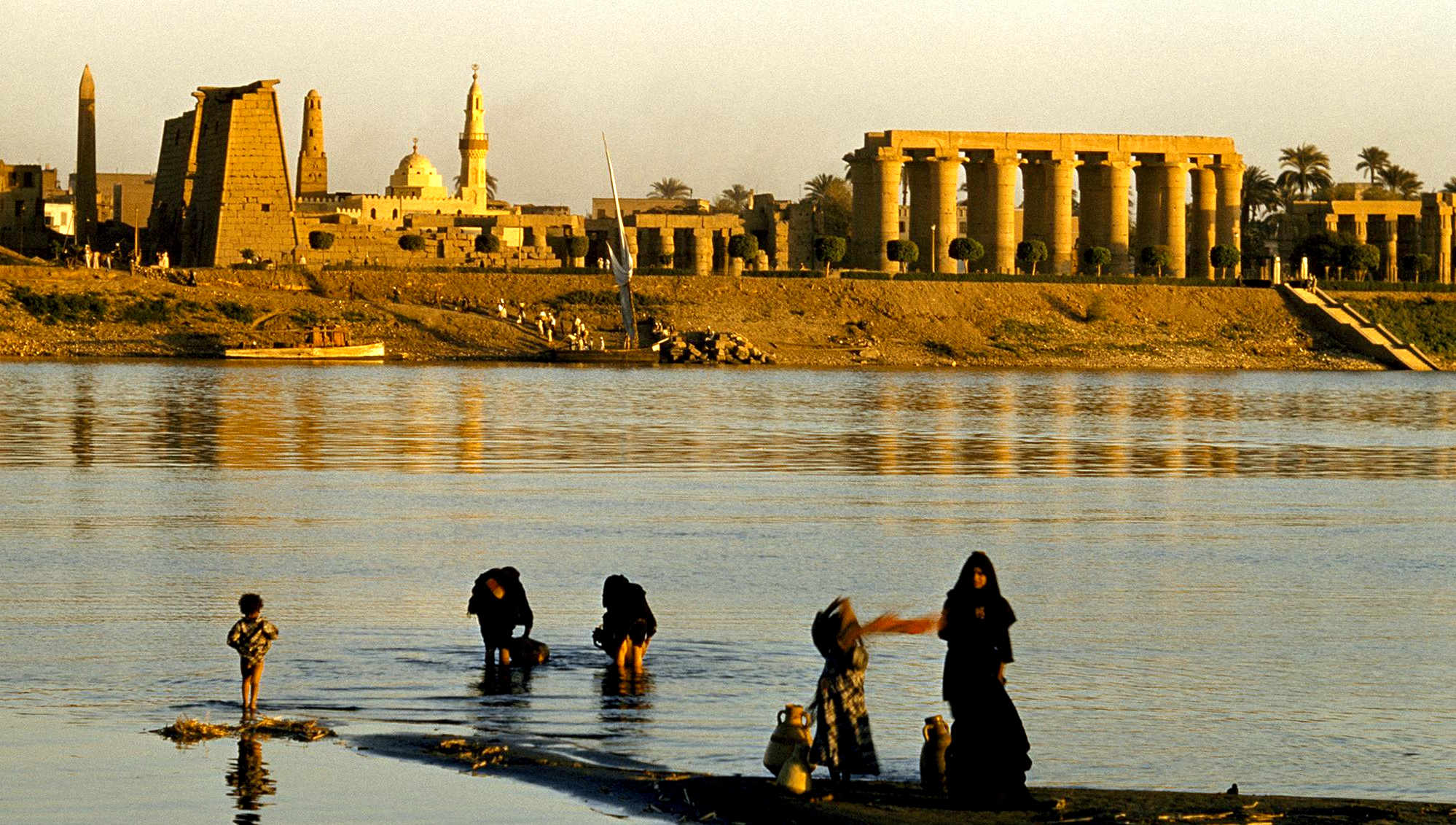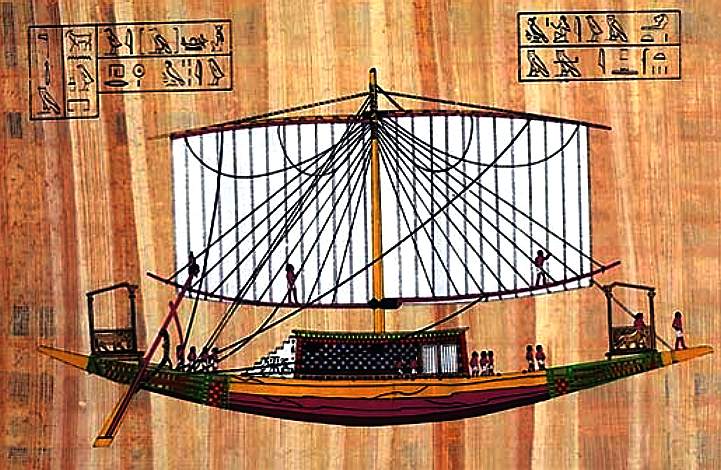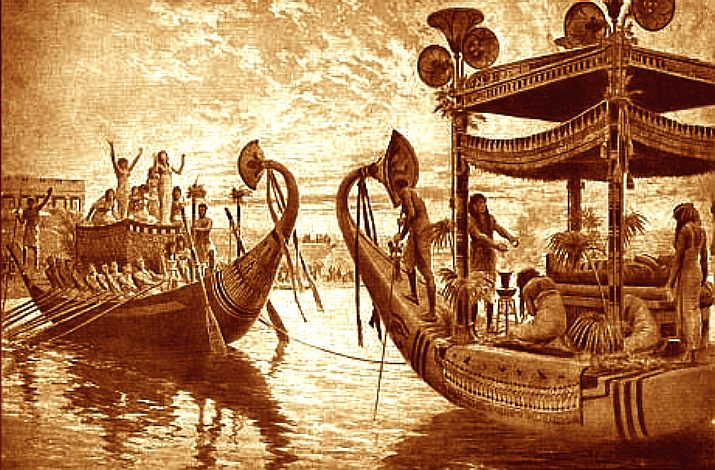
Dahshur
is the site of Amenemhat III's Pyramid, the sixth tallest in
Egypt.
The Black Pyramid was built by King Amenemhat III (r. c. 1860 BC-c. 1814 BC) during the Middle Kingdom of Egypt (2055–1650 BC). It is one of the five remaining pyramids of the original eleven pyramids at Dahshur in Egypt. Originally named Amenemhet is Mighty, the pyramid earned the name Black Pyramid for its dark, decaying appearance as a rubble mound. The Black Pyramid was the first to house both the deceased pharaoh and his queens. Jacques de Morgan, on a French mission, began the excavation on the pyramids at Dahshur in 1892. The German Archaeological Institute of Cairo completed excavation in 1983.
The pyramid was originally about 75 metres tall with a base 105 metres long and an incline of 57°. Typical for pyramids of the Middle Kingdom, the Black Pyramid, although encased in limestone, is made of mud brick and clay instead of stone. The ground-level structures consist of the entrance opening into the courtyard and mortuary temple, surrounded by walls. There are two sets of walls; between them, there are ten shaft tombs, which are a type of burial structure formed from graves built into natural rock.
The pyramidion, which is the capstone of a pyramid, was covered with inscriptions and religious symbols. Some of these were scratched off, leading researchers to conclude the pyramidion was never used or it was defaced during Akhenaten's rule.
Below ground level in the subterranean structure lay a network of complicated passages. The king's section remains mostly intact with a sarcophagus and canopic jar; however, the king was not buried there. The section for the queens was broken into and looted. There are four other burial chambers in the subterranean structure; to whom they belong, however, is unknown. Two are thought to belong to King Amenemhet IV and queen Sobekneferu.
The Dashur pyramid was on an east–west orientation with two entrances and a complicated set of chambers. One entrance is on the south-eastern corner and the other on the south-western.
The core of the superstructure was of mud brick with no internal walls, possibly to keep the weight to the minimum considering how close the pyramid was to the Nile. The pyramid was built on clay that was unable to support the weight and began to sink, just as the Bent Pyramid of Sneferu at Dashur had begun to sink centuries before. The two pyramids are approximately 1.5 km apart.
The outer cladding of limestone 'veneer' was held together with dovetail pegs, following the style of his father's tomb. The finished dimensions were approximately 200 cubits per side and 150 cubits high.
The pyramid was abandoned after it began to crush the underground chambers. The builders had hastily installed supporting beams and mud brick walls to stop the sinking, but it was too little, too late, and the pyramid was abandoned. The 'King's section' contained a burial chamber containing a large sarcophagus that was carved to imitate the outer wall of Djoser's Pyramid complex at Saqqara, possibly another attempt to reinforce the legitimacy of his rule.
Burial chambers for two of his queens were created beneath the pyramid; the first chamber of the 'Queens' section' under the south-western quadrant of the pyramid was for Queen Aat and the second chamber was for an unnamed queen. Although both chambers had been entered and looted in antiquity, archaeologists found many items overlooked by the looters, including one of Queen Aat's canopic jars.
Queen Aat's chamber contained a sarcophagus similar to the king's. The causeway was unusually wide with a large open area. There were houses on the northern side of the causeway that have been identified as priest's houses.
By the 13th Dynasty, the lack of security meant that locals had usurped the Valley Temple to be used as a granary and the first breach of the pyramid happened at about that time. There is evidence of restoration work perhaps 100 years later, when King Auibre Hor and his princess Nubhetepti-khered were buried in two of the ten shaft tombs on the northern side of the outer enclosure.

STRUCTURAL DEGRADATION
The Black Pyramid, with all its wide passageways, had multiple structural deficits. The pyramid was built in one of the lowest regions of Egypt, only 10 metres above sea level. There are countless corridors and chambers underground, and there are not enough stress relievers to hold up the ceilings. The pyramid is not very sturdy, as it was built with mud brick instead of the traditional stone. The low elevation, corridors, and unstable building material allowed groundwater from the Nile to seep into the walls, causing the entire pyramid to sink into the ground and crack.
Apart
from ruling their country, the
ancient Egyptians
had time to contemplate how they would cope in the afterlife
during the flooding of the Nile, when farm laborers could be
used to build, giving them a positive agenda. Each
successive ruler of the sandy kingdom, wished for more
comforts, and to outdo their forebears, in terms of how they
would be remembered.
Egypt was one of the richest and most powerful civilizations in the world
at that time. So could afford to convert their national
output, into something tangible, for their citizens to
marvel at. At the time they had few threats to national
security.

Generally,
the bigger the pyramid, the more important the Pharaoh. It's
a Freudian thing. This compendium is in order of height.
There are many very interesting pyramid designs that will be
covered in the general indexing, if they have unusual or
developmental features. Since, the art of pyramid
construction and development appears to have been an ongoing
thing, until it fizzled out as a result of resource scarcities, adventures of thieves, and land grants
to priests, as the last straw that broke the camel’s back.
Pyramids ceased to be economically viable, and a huge drain
on what we'd call the Gross National Product (GNP) today.
And as for climate
change, they are hardly a sustainable practice, in UN
SDG terms.
On
the basis that the
taller the pyramid, the higher the status of the
king or queen,
it might be argued that Khufu takes first prize, with Khafre
a close second. After that, nobody came close to 140 meters,
as the national goal to achieve a taller building than the
last ruler fell by the wayside.
Please
note, this is not a definitive table, but our own guide,
based on freely available information. Students of
archaeology and Egyptologists will draw their own
conclusions. Observations are most welcome, if we have
misquoted anything. We'd be pleased to make corrections as
applicable.

RULER
WITHOUT A PYRAMID - Tragically, queen Cleopatra poisoned herself
with an Egyptian cobra. Later her
mausoleum was washed into the sea by an earthquake and
tsunami in 365AD. Leaving little to visibly remind us of
the great Pharaoh.
The oldest known pyramid in Egypt was built around 2630 B.C. at Saqqara, for the third dynasty’s King Djoser. Known as the Step Pyramid, it began as a traditional mastaba but grew into something much more ambitious. The pyramid’s architect was Imhotep, a priest and healer who some 1,400 years later would be deified as the patron saint of scribes and physicians. Over the course of Djoser’s nearly 20-year reign, pyramid builders assembled six stepped layers of stone (as opposed to mud-brick, like most earlier tombs) that eventually reached a height of 204 feet (62 meters); it was the tallest building of its time. The Step Pyramid was surrounded by a complex of courtyards, temples and shrines where Djoser could enjoy his afterlife.
After Djoser, the stepped pyramid became the norm for royal burials, although none of those planned by his dynastic successors were completed (probably due to their relatively short reigns). The earliest tomb constructed as a “true” (smooth-sided, not stepped) pyramid was the Red Pyramid at Dahshur, one of three burial structures built for the first king of the fourth dynasty, Sneferu (2613-2589 B.C.) It was named for the color of the limestone blocks used to construct the pyramid’s core.









